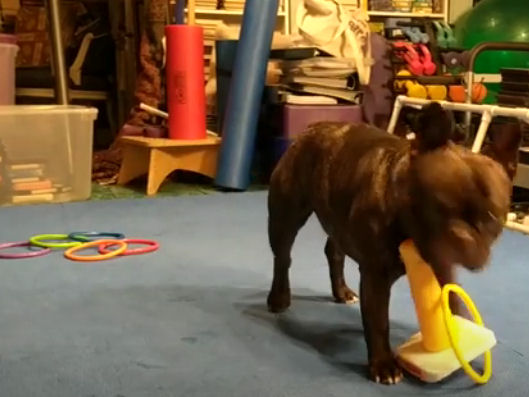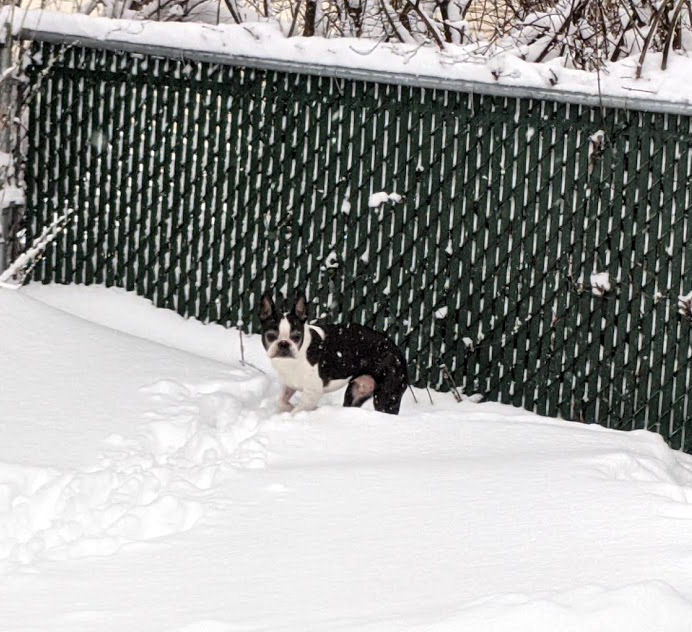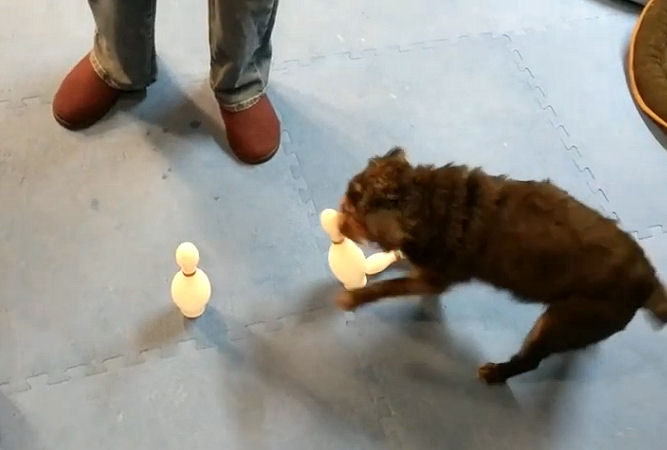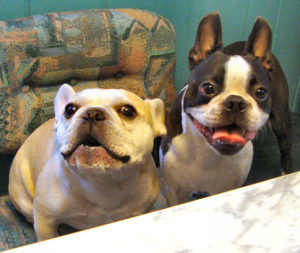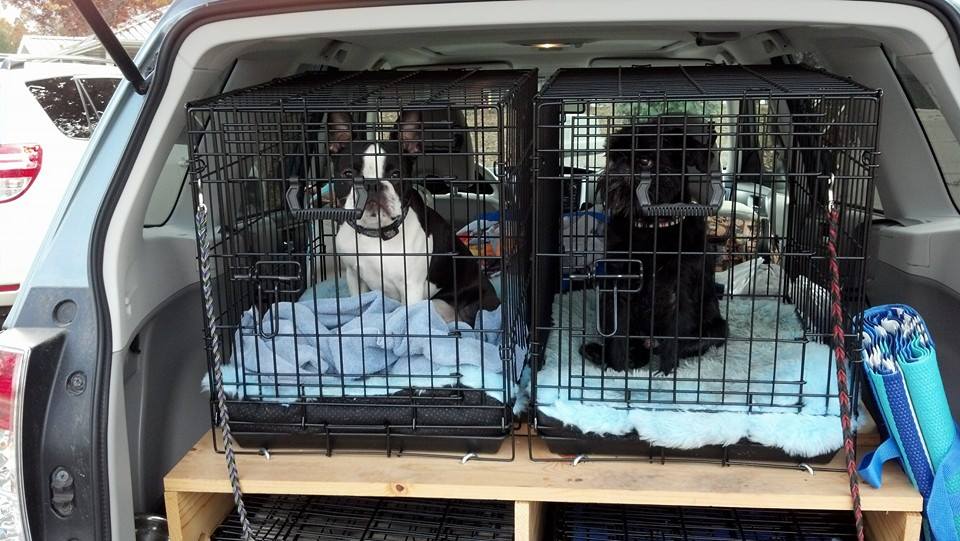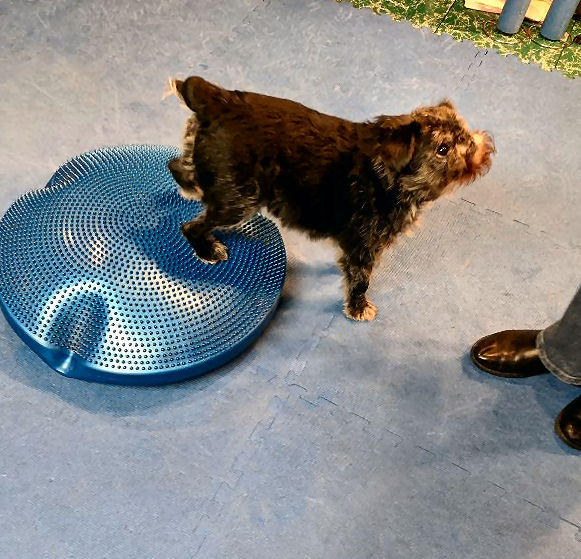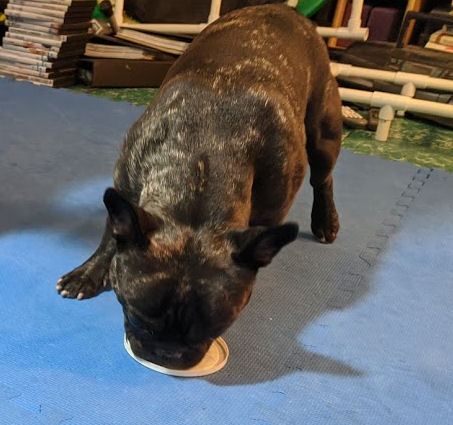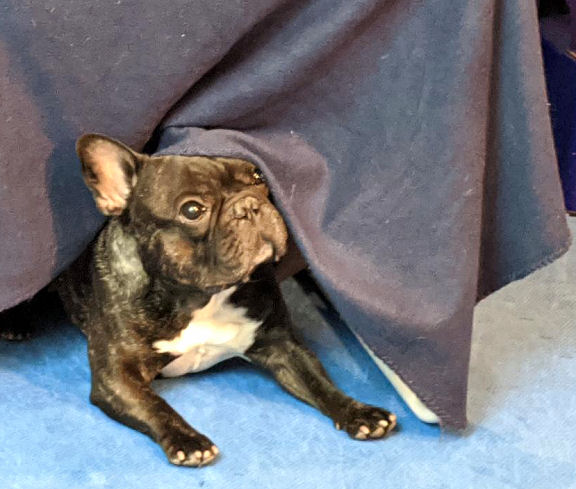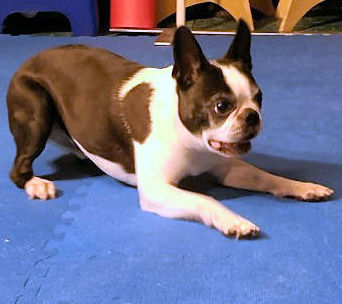
Do you have a dog who likes to play “keep away?” It’s frustrating and can be scary – especially if you’re in a heavy-traffic area.
You can get your dog to come running to you whenever you call. One of the best games for recalls (“come”) just turns “Keep Away” around! What do you think would happen if YOU were the instigator of this version of “Keep Away?”
Catch Me If You Can
This game asks that you act against every instinct you have. When your dog takes off running away from you, or dances just out of reach, everyone’s first impulse is to run after the dog, or try and grab him. It’s natural. And it’s wrong.
Instead, you’re going to work with the fact that your dog has exactly the same instinct. After all, both humans and dogs are predators. We share the “chase” reaction. So we’re going to use it.
Playing the game
In a controlled environment, where you know your dog can’t get away from you (indoors, or a fenced area), bring your leashed dog and have a pouch of really top-notch treats ready to use. If your dog is more toy than food motivated, bring the best tug toy your dog loves. If you can hide the toy so your dog doesn’t realize you have it, even better. We’ve been known to stuff toys up under our shirts if they don’t fit in a pocket.
When you get to the safe spot, without saying anything to your dog, drop the leash and take off running away from him/her. If your dog isn’t paying attention, you can yell his/her name while you run away.
Really run. No half-baked pretend running, or sideways running to keep an eye on your dog. You’ve made sure Fido can’t get away. All dogs are faster than we are. Get into the spirit of the game. Run!
As soon as your dog catches up with you, grab the dog’s collar with one hand and start shoveling treats into his mouth with the other. Or if you have that toy, whip it out and play tug. Celebrate!
A note about using toys as rewards: The reward is playing tug with you. It’s not getting the toy and playing by himself. Don’t drop or throw the toy. Keep hold of it and offer it to your dog for a game of tug. If you let your dog play by herself, you’ve undone all the good you just achieved. We’re establishing that you are a component of the reward. Without you, there’s no fun game.
Do it again
After a half-dozen treats (or so), or a minute of tugging, start the whole thing again. Take off running, away from your dog. When she catches you, reward with a jackpot of treats, or a game of tug.
Rinse and repeat
That’s all there is to it. Playing this game will teach your dog that coming to you is always a good thing. There will be treats, toys, and you!
You’ll find more fun games that will convince your dog that the only place he wants to be is with you in Book 2: Come!

